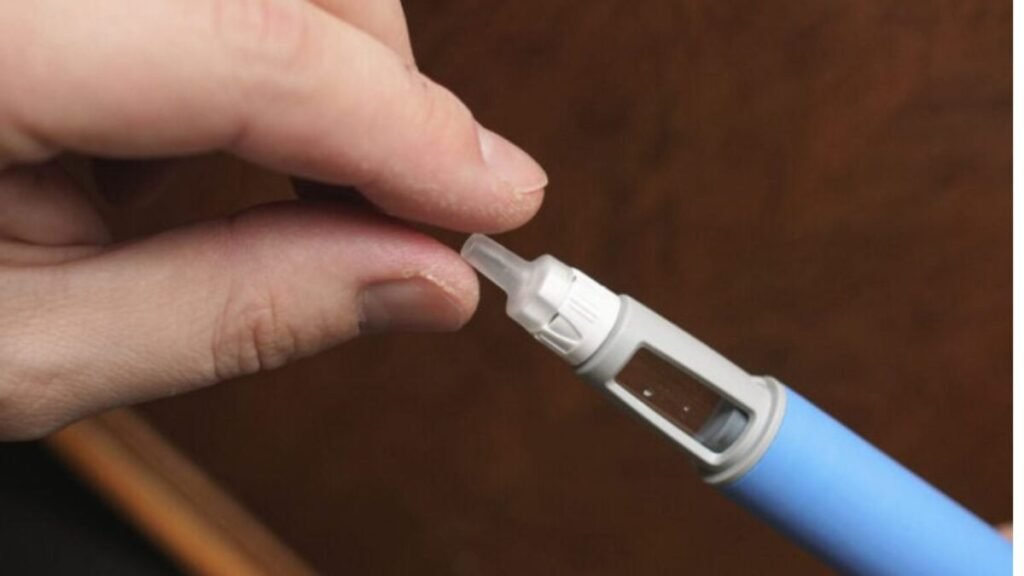Ozempic could change how our body processes alcohol

Science is learning more about the effects of Ozempic and other similar GLP-1 medications on alcohol consumption. A new study shows that these medications for obesity and diabetes could change the way our bodies process alcohol.
Researchers in Virginia analyzed how GLP-1 users processed alcohol immediately after consuming several drinks. Compared to non-GLP-1 users, researchers found that those using GLP-1 drugs experienced a delayed increase in their blood alcohol levels and reported feeling less affected by alcohol overall. The findings seem to provide insight into why GLP-1 medications have shown promise as a treatment for alcohol use disorder.
“These data provide preliminary evidence that GLP-1 drugs may act through peripheral mechanisms to suppress alcohol consumption,” the authors wrote in their article, published Wednesday in Scientific Reports.
Surprising reduction in cravings
Semaglutide (the active ingredient in Ozempic and Wegovy) and other GLP-1 drugs have revolutionized the field of obesity treatment in recent years. They have been much more effective in helping people lose weight compared to diet and exercise alone. Some doctors and GLP-1 users have also reported that these drugs seem to reduce cravings for substances other than food, including potentially addictive drugs such as opioids, cocaine, and alcohol. There are also preliminary studies that support these findings.
There is still much we don’t know about how and why these drugs may actually work to reduce cravings for substances like alcohol. That’s why researchers at the Fralin Biomedical Research Institute (FBRI) at Virginia Tech studied the immediate effects of alcohol in people taking GLP-1.
They recruited 20 participants with obesity (body mass index over 30) for their small-scale study. Half of the volunteers took one of three GLP-1 medications (semaglutide, tirzepatide, or liraglutide), and the other half did not take any of these drugs. The researchers got them drunk in a controlled environment, of course.
Volunteers were asked to drink three alcoholic beverages in one hour and then were monitored for up to four hours in a recovery room. During this experiment, their blood alcohol level, glucose, and vital signs such as blood pressure were regularly measured.
The researchers gave the volunteers enough alcohol to raise their blood alcohol concentration to 0.08% by the end of the consumption period, which is the legal limit for driving in most of the U.S. However, although both groups reached roughly the same endpoint, GLP-1 users experienced a slower increase, on average. They also reported feeling less subjectively drunk during the experiment and having less craving for alcohol overall before and after the experiment.
The findings suggest that GLP-1 drugs may change the speed at which alcohol enters the bloodstream, according to the researchers, possibly through slower gastric emptying, a known effect of GLP-1. This slower introduction may reduce alcohol addiction.
“Faster-acting drugs have a greater potential for abuse,” said study author Alex DiFeliceantonio, assistant professor and interim co-director of the FBRI Health Behavioral Research Center, in a statement from the university. “They have a different impact on the brain. Therefore, if GLP-1 drugs delay alcohol entering the bloodstream, they could reduce its effects and help people drink less.”
More information
The researchers say their work should be considered a pilot study, and more studies are needed to confirm the findings. Some research has also indicated that GLP-1 drugs may directly affect the brain’s reward system related to alcohol and other drug consumption, possibly providing another way they can moderate our cravings.
Regardless of how these drugs work, the evidence will need to be analyzed. There are several clinical trials of GLP-1 therapy for substance use disorders, including [link]. If these trials are successful, GLP-1 drugs could become an attractive option for treating these difficult-to-control disorders.
This article has been translated from Gizmodo US by Lucas Handley. [link] to find the original version.






